#cassell's illustrated shakespeare
Explore tagged Tumblr posts
Text

Imogen in Cymbeline - (The Tragedy of Cymbeline, King of Britain) by Henry Courtney Selous
#henry courtney selous#art#imogen#innogen#cymbeline#princess#britain#british#shakespeare#william shakespeare#ancient britain#matter of britain#celtic#king#cunobeline#antiquity#roman#roman britain#england#wales#rome#tragedy#europe#european#play#plays#cassell's illustrated shakespeare#victorian
142 notes
·
View notes
Text
Shakespeare Weekend
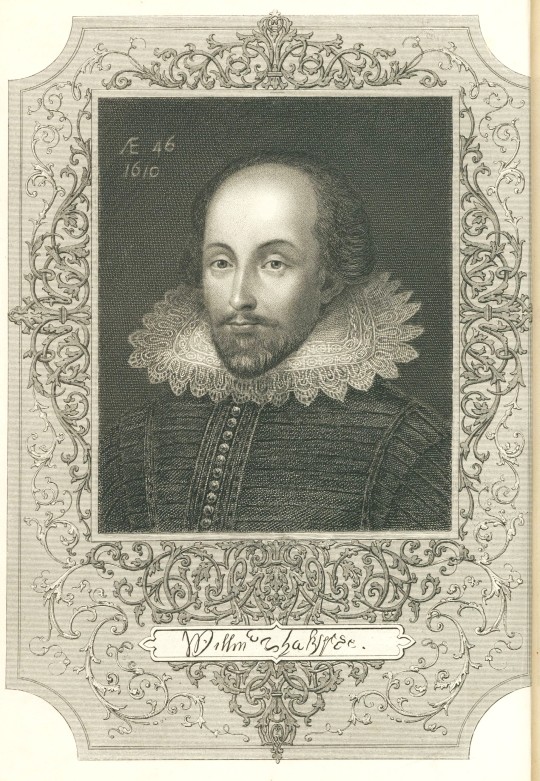
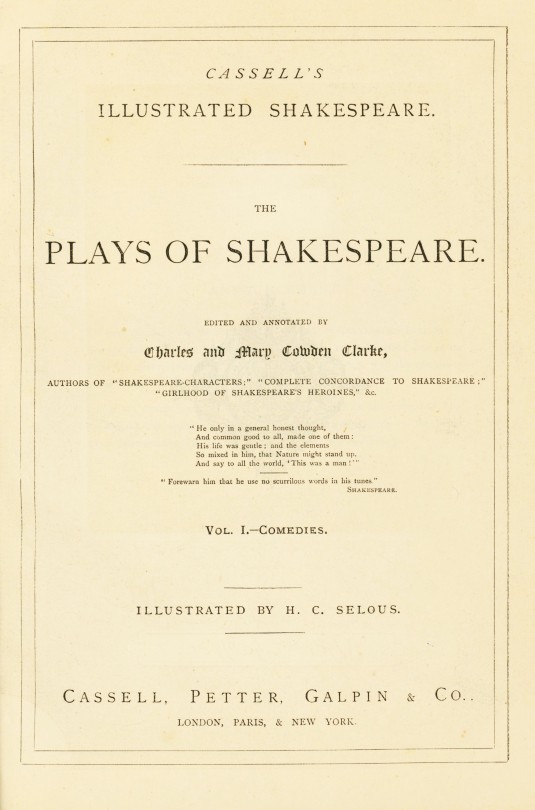
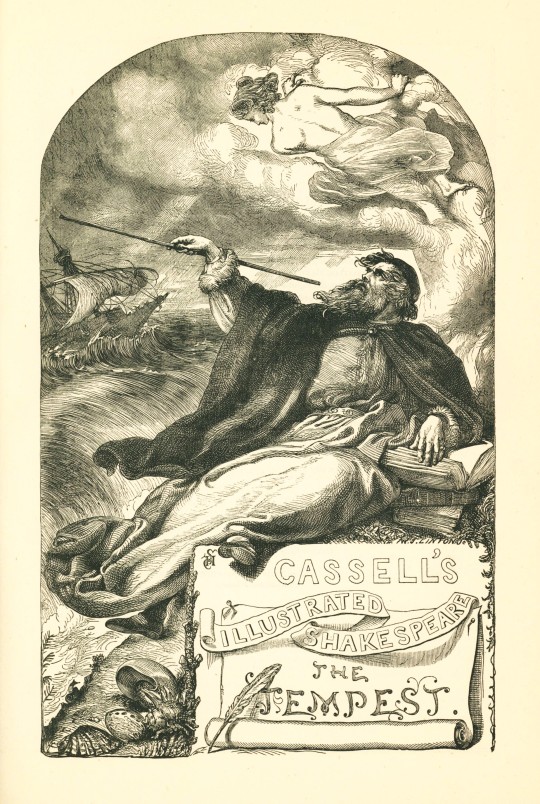
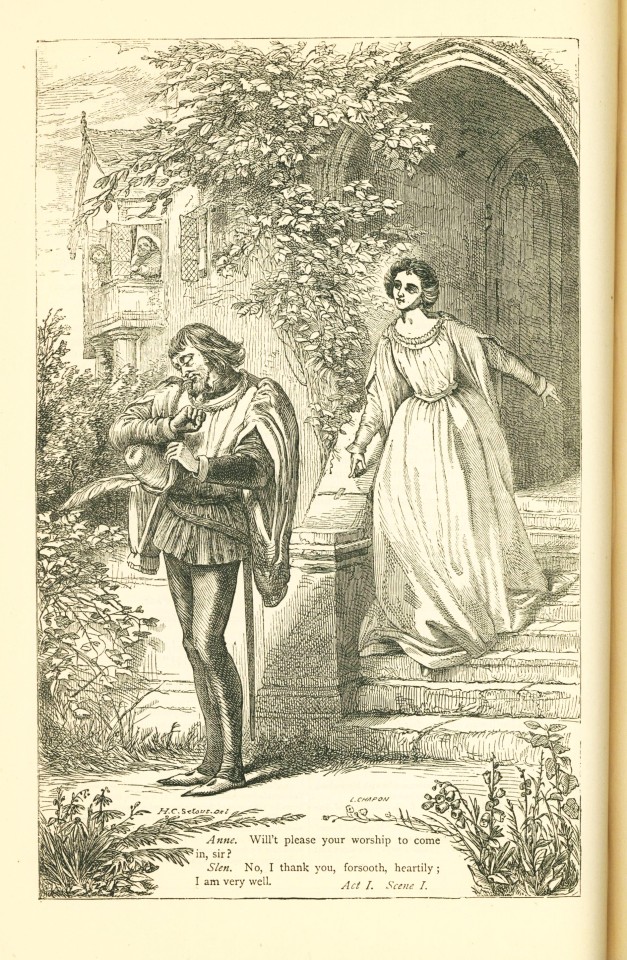
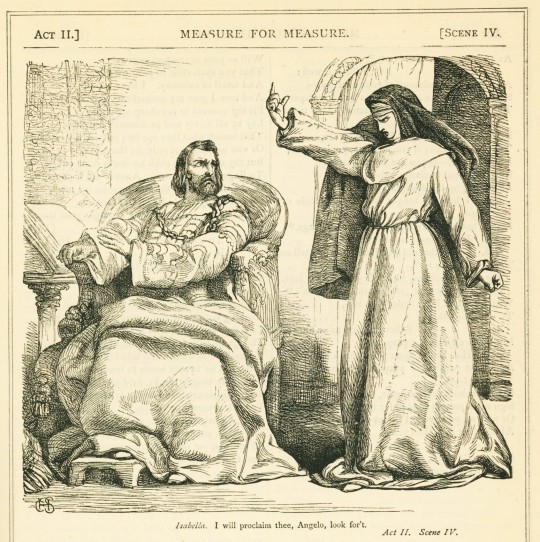
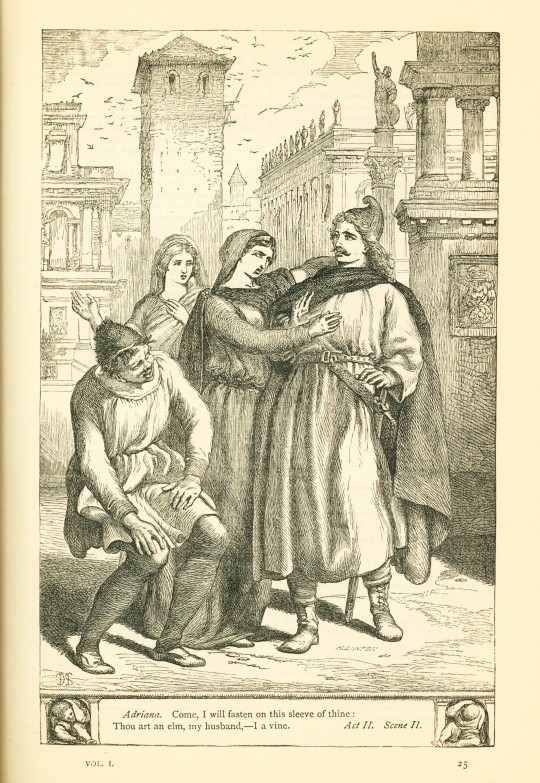
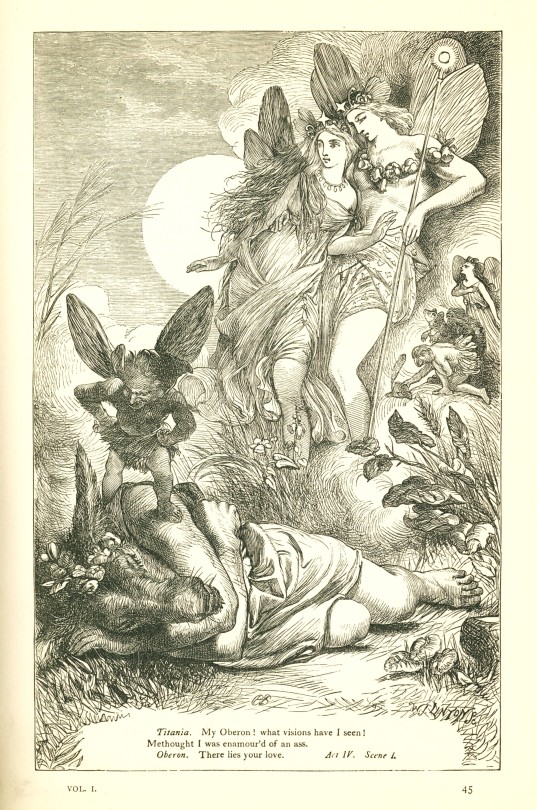
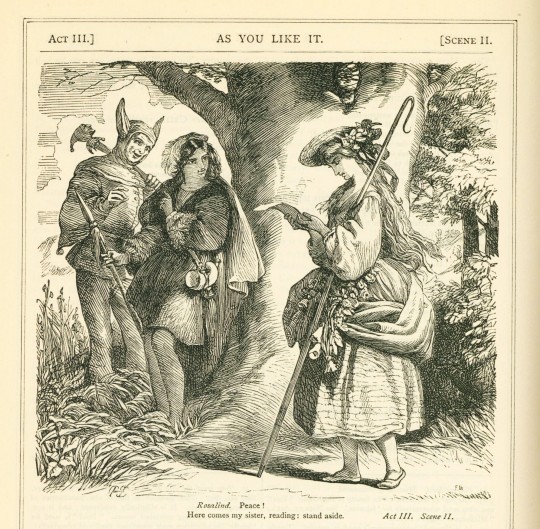
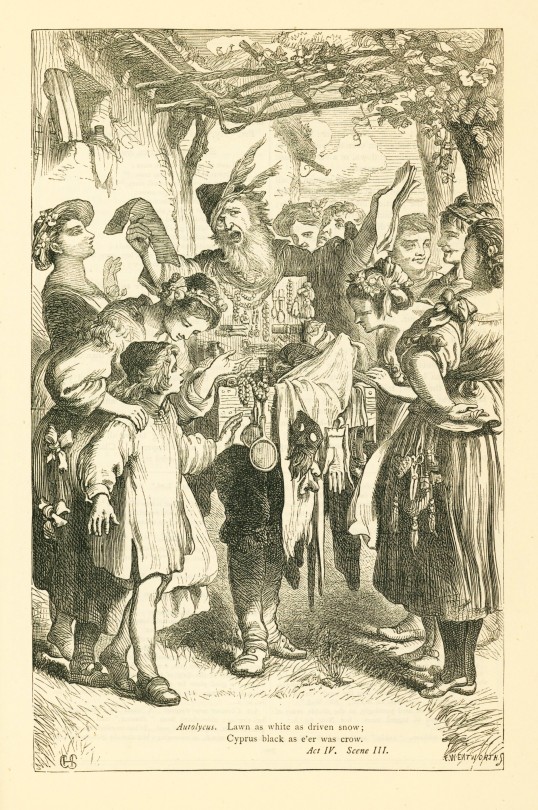
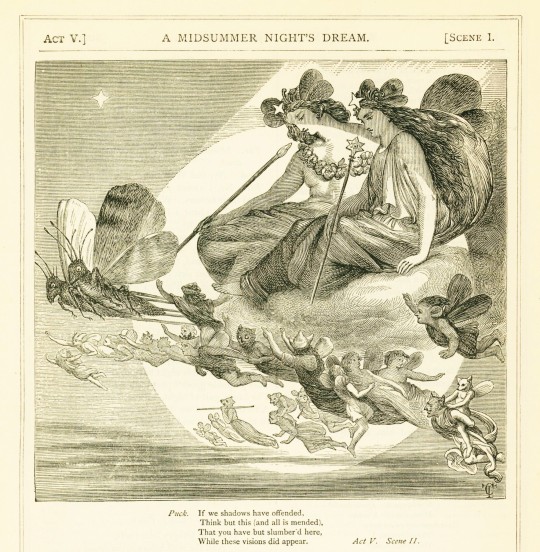
Working our way through the Shakespeare Collection, our next stop is The Plays of Shakespeare edited and annotated by Charles (1787-1877) and Mary Cowden Clarke (1809-1898) and illustrated by H.C. Selous (1803-1890). The collection was published by Cassell, Petter, Galpin & Co., likely in the mid to late 1860s and consists of three volumes each arranging the plays into comedies, histories, and tragedies.
Scholarly English authors Charles and Mary Cowden Clark refer to the collection as the “People’s Edition” stating their intention for the work to be read within the household and among family circles. Keeping young readers in mind, the plays are annotated for a novice Shakespearean audience and Titus Andronicus is omitted from the collection due to its “grossness”. Additionally, the collection is heavily illustrated by Selous with wood engravings, providing valuable imagery for those unfamiliar with Shakespeare’s plays.
Volume One contains all of Shakespeare’s comedies and opens with a full-page frontispiece of the author.
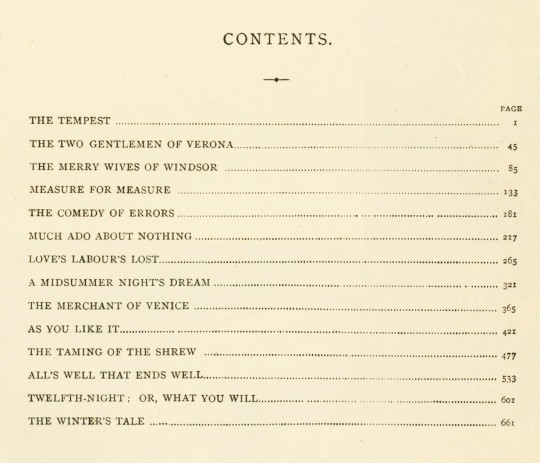
View more Shakespeare Weekend posts.
-Jenna, Special Collections Graduate Intern
#shakespeare weekend#the plays of shakespeare#charles cowden clarke#mary cowden clarke#h.c. selous#Henry Courtney Selous#cassell#william shakespeare#shakespeare#illustration#wood engravings
106 notes
·
View notes
Text

Strawberry and Nettle taken from 'Flowers from Shakespeare's Garden' illustrated by Walter Crane (English, 1845–1915).
Published 1906 by Cassell & Co.
Image and text information courtesy MFA Boston.
2K notes
·
View notes
Text
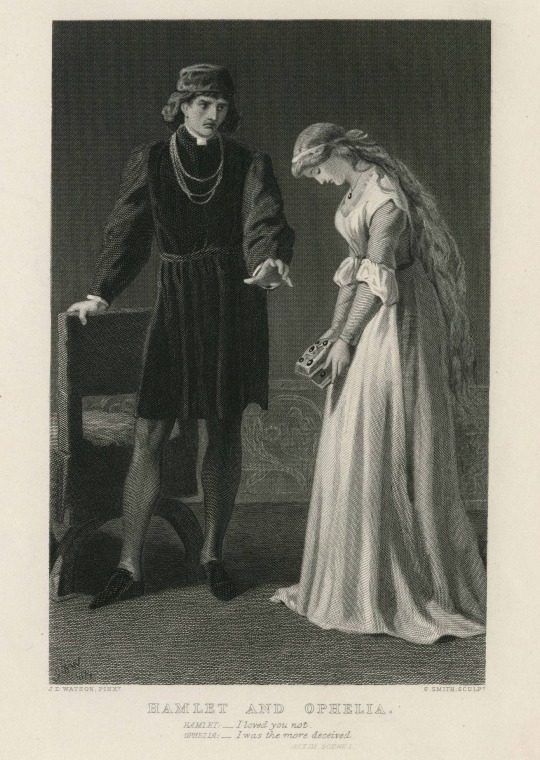
Hamlet and Ophelia
Painted by J D Watson, engraved by S Smith
Hamlet (Act III, Scene 1)Hamlet: "I loved you not." Ophelia:" I was the more deceived."
Cowden-Clarke, Charles and Mary, eds. The Plays of William Shakespeare. The Tragedies.
Illustrator: H.C. Selous. London: Cassell, Petter, Galpin and Co.
c. 1830.
10 notes
·
View notes
Photo

Illustration de Walter Crane (1845-1915) "Flowers from Shakespeare's Garden'" (Londres, Cassell & Co. 1906). NYPL Digital Gallery
31 notes
·
View notes
Photo

After Henry Courtney Selous - A Midsummer Night's Dream. Illustration for The Plays of William Shakespeare edited by Charles and Mary Cowden Clarke (Cassell, c 1890).
0 notes
Text
Dining out in Regency England: The Belle Sauvage
By Lauren Gilbert
La Belle Sauvage Inn, Ludgate Hill, London
My husband and I went out to dinner this evening and really enjoyed it. Dining out is usually a pleasure, and it is something people have been doing for generations. Lists of places to eat were published in guide books and The Epicure's Almanack which was published in 1815. Dolly's Chop House and Lloyd's Coffee House were well known names. I ran across one named La Belle Sauvage Tavern (also known as the Bell Savage Tavern), located on Ludgate Hill, with a long and fascinating history. As you will see, La Belle Sauvage was much more than a place to eat. There is a record of a forged claim by William Lawton for 20 shillings against William Savage in the area, which resulted in Mr. Lawton being sentenced to an hour in the pillory and establishes the name of Savage as that of a citizen there. During the reign of Henry VI, in 1453, a clause roll (or close roll-administrative records created by the royal chancery) refers to the bequest of Savage's Inn, which would indicate the existence of an inn as early as the 15th century. The inn also seems to have been known at some point as the Bell in the Hoop. The inn was a coaching inn at this point. There is an indication that in 1554 Sir Thomas Wyatt came to the Bell Savage in Ludgate for his rebellion, stopped to rest, couldn't get into the city (which ended his rebellion), and rested at the inn until he could turn himself in at Temple Bar. In 1568, John Craythorne gave the right to possess the property to the Cutler's Company (knife makers' guild). By 1584, the inn was known as the Belle Sauvage. Plays were staged in the yard of certain inns during this period, and were staged at the Belle Sauvage, including a performance of Marlowe's Doctor Faustus and (possibly) some of Shakespeare's plays; there is an indication that Love's Labours Lost was performed there. In 1616, John Rolfe and Pocahontas stayed at the Belle Sauvage during their visit from America. (Subsequently, there was a theory that the inn was named for her, but that was not correct as it was known as the Belle Sauvage or Bell Savage long before her arrival.) The original inn burned down in the Great Fire of London, but it was rebuilt. In 1703, the Belle Sauvage was mentioned in a newspaper article in relation to damage to the building resulting from a severe windstorm.
La Belle Sauvage Inn and Yard
The Belle Sauvage became one of the famous coaching inns. In 1674, with 40 rooms and facilities for 100 horses, it was quite an enterprise. By the Regency era, it had stabling for approximately 400 horses and was known for sending coaches all over the country. (The Belle Sauvage was one of two inns on the London to Bath route-by 1667, a stage left at 5:00 am every Monday, Wednesday and Friday, and travellers were told they would complete the 105 mile trip in three days if all went well.) Routes expanded and coaches from the Belle Sauvage went to Colchester, Ely, Holyhead, Shrewsbury, Warwick and Windsor, to name a few. The hostlers would have changed horses (a fresh team harnessed to a coach to replace an exhausted team) while passengers hopefully had time to dine (dinners had to be timed for a coach's arrival), some stayed the night, possibly to be ready for an early departure, and so forth. It was one of the main inns for mail coaches and stage coaches coming into and leaving London. Its proximity to the Fleet Prison also brought a clientele for meals. (Prisoners had to pay for food and beverages. Lucky prisoners had family or friends willing to bring them meals or the means to pay a jailor to bring food; the Belle Sauvage was handy for such custom. Local businessmen and others with business in the area also dined there.) What amenities might have been enjoyed at La Belle Sauvage? In general, coaching inns offered breakfast, dinner, supper, and liquid refreshment. According to The Picture of London, for 1803: Being A Correct Guide to All the Curiosities, Amusements, Exhibitions, Public Establishments, and Remarkable Objects, In and Near London, The Belle Sauvage had a good coffee room (dining room), newspapers, and access to coaches to and from many regions of England. The guide book indicates it was popular with travellers. The Epicure's Almanack; or Calendar of Good Living, published in 1815, includes the Belle Sauvage in its list of places to dine in the Fleet Market area. Commended for a "well stocked larder"(1), The Epicure's Almanack indicates that the Belle Sauvage was not only popular with travellers but others as well. It does not provide a description of meals serviced or specialties, but apparently the Belle Sauvage was not one of the inns known for meals served badly prepared or timed so that travellers could not enjoy them. There are also literary references to the Belle Sauvage (or Bell Savage). Sir Walter Scott named "the famous Bell-Savage" (2) in Kenilworth in Chapter 13, the inn where Wyland and Tressilian stayed. Kenilworth was first published January 28, 1821 and is set in 1575. Another literary reference was established when Charles Dickens alluded to the Belle Sauvage in The Pickwick Papers. The novel is set in the years1827-1831 and was originally published in installments between March 1836-November 1837. It features a character named Tony Weller (father of Sam Weller) who was a coachman whose coach arrived in and departed from London at La Belle Sauvage. It was also linked with the magazine Punch (founded in 1841). The men who produced the magazine met weekly over dinner to discuss and debate various subjects, and the Belle Sauvage was supposedly the site of such a dinner, possibly the first (I was unable to find an exact date). Trains had been on the horizon since the late 18th century and steam engines a subject of study and experimentation in the early 19th century. Development continued, and in 1830, the Liverpool to Manchester route opened. The 1840's saw a huge growth in the railroad systems (by 1844, over 2000 miles of line had been established) and, as the routes expanded, the need for coaching service diminished. Railroad travel was faster and provided more efficient service for the mail. As the coaching routes were no longer needed, coaching inns no longer drew customers. The railroad era finally put an end to La Belle Sauvage and, in 1873, it was torn down to allow for construction of a railway viaduct.
Footnotes: (1) The Epicure's Almanack: Eating and Drinking in Regency London, ed. Janet Ing Freeman, pp. 77-78. (2) Scott, Sir Walter. Kenilworth. P. 171. Sources include: Feltham, John. The Picture of London, For 1803: Being A Correct Guide to All the Curiosities, Amusements, Exhibitions, Public Establishments, and remarkable Objects, in and Near London. 1802: R. Phillips, London). A Nabu Public Domain Reprint. Rylance, Ralph. The Epicure's Almanack: Eating and Drinking in Regency London The Original 1815 Guidebook, edited by Janet Ing Freeman. 2013: British Library, London. Scott, Sir Walter. Kenilworth. A. L. Burt Co, New York. (Publishing date is not shown; appears to have been published about 1926)
Elizabethan Era. "Bell Savage Inn" by L. K. Alchin. HERE thestreetnames.com "Pocahontas and her London Street Name Connection," Elizabeth Steynor, 1/13/2017, HERE; "La Belle Sauvage Yard, Pocahontas and a dancing horse," Elizabeth Steynor, 5/18/2015 HERE; "London's Coffee Connections," Elizabeth Steynor, 9/29/2014 HERE AnInkyTale.co.uk. "Proprietors of Punch Magazine" Jane E. Chadwick, September 26, 2016 HERE. British Heritage Online. "Travel Through Time at England's Coaching Inns" by Sean McLachlan, July 1, 2009. HERE British History Online. Walter Thornbury, 'Ludgate Hill', in Old and New London: Volume 1 (London, 1878), pp. 220-233 HERE. English Historical Fiction Authors. "Coaching Inns in Early 19th Century England" by Julie Klassen, December 12, 2016. HERE; "Lloyds--Lifeblood of British Commerce and Starbucks of Its Day" by Linda Collison, July 30, 2012. HERE Google Books. 1607: Jamestown and The New World. Compiled by Dennis Montgomery. 2007: The Colonial Williamsburg Foundation, Williamsburg, VA, in association with Rowman & Littlefield, New York. P. 140. HERE; Holland, J. G. Scribner's Monthly, An Illustrated Magazine for the People. Vol. XXII. (May, 1881 to Oct. 1881, inclusive). "In and Out of London with Dickens." P. 39. 1881: The Century Company, New York HERE; Spielman, Marion Harry. The History of Punch 1895: Cassell and Company, Ltd., London. HERE London Online. "La Belle Sauvage." (No author or post date shown.) HERE The Word Wenches. "Travelling the Roads of Regency England with Louise Allen!" March 4, 2015. HERE Parliament.UK. "Railways in Early 19th Century Britain." (No author or post date shown.) HERE Wicked William. "Principal Departures for London Coaches (1819)" by Greg Roberts, April 28, 2016 HERE Pictures: Wikimedia Commons (Public Domain) HERE and HERE. Lauren Gilbert, author of Heyerwood, A Novel, lives in Florida with her husband. She is a long-time member of JASNA, and is also a member of the Florida Writer's Association. Her next novel, A Rational Attachment, is due out soon. Visit her website for more information HERE.
Hat Tip To: English Historical Fiction Authors
0 notes
Text
Shakespeare Weekend
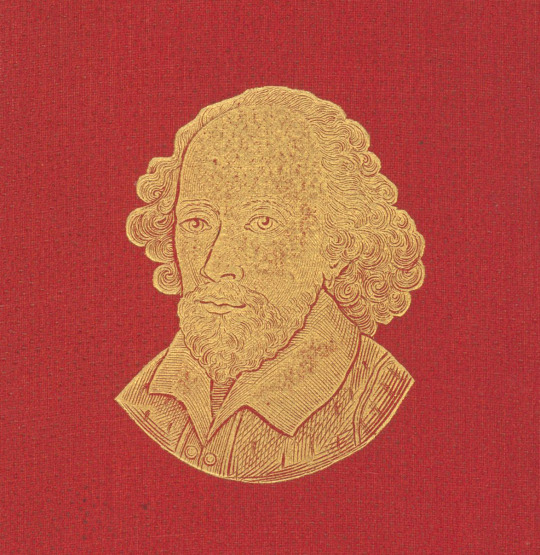
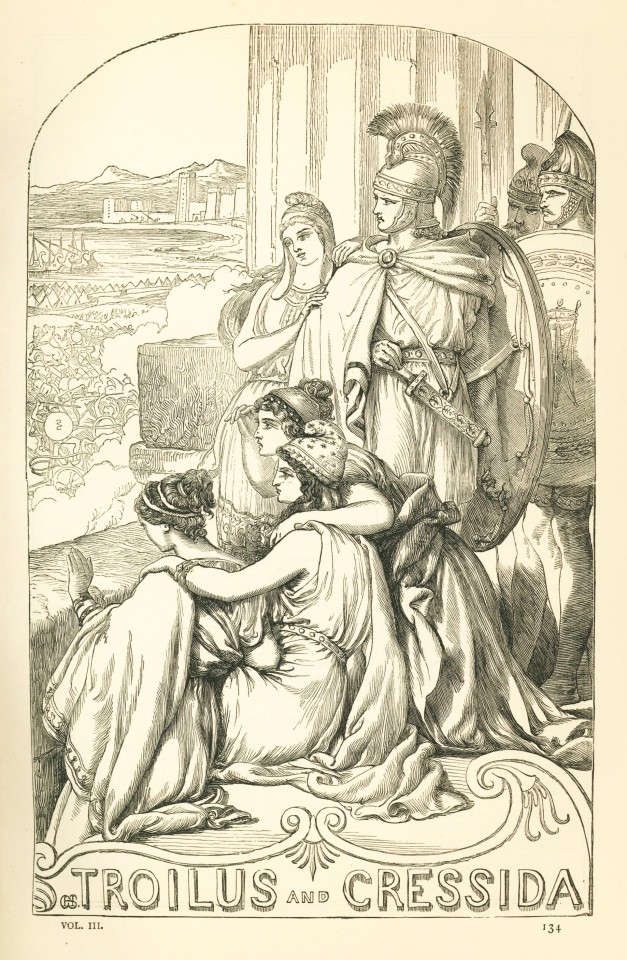
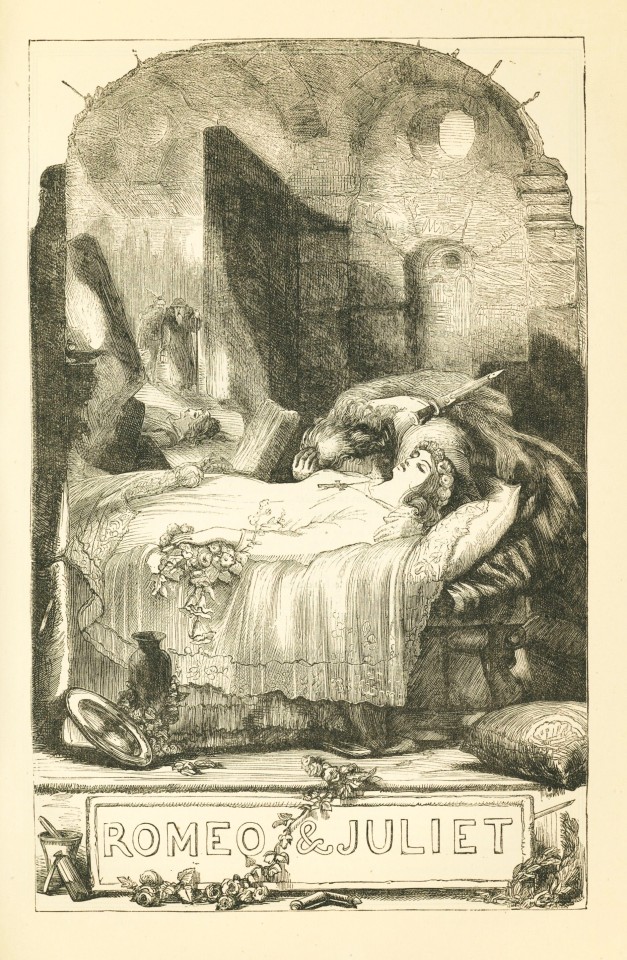
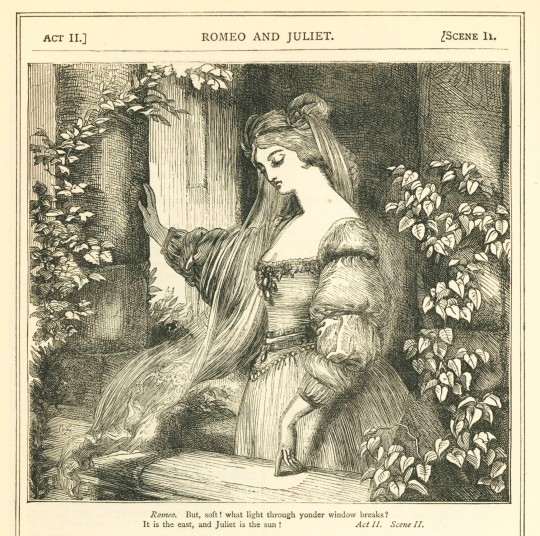
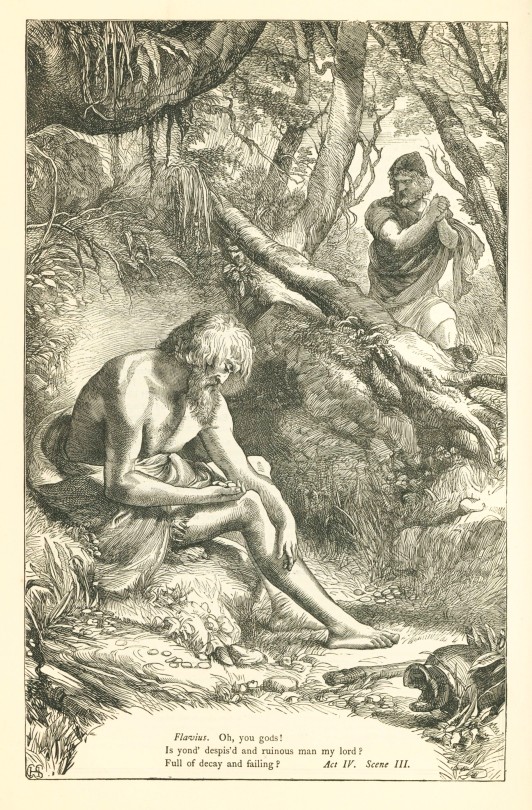
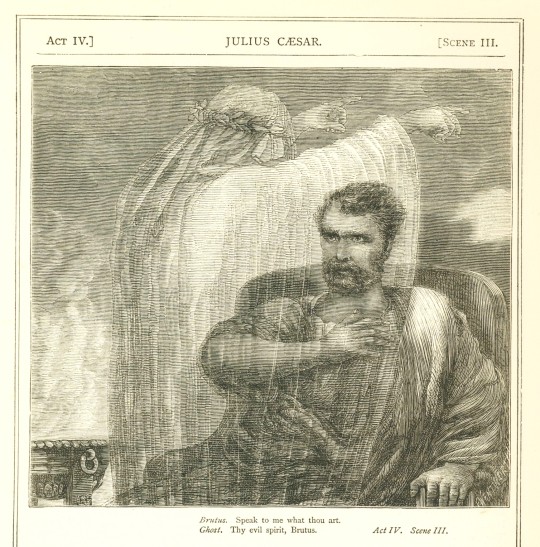
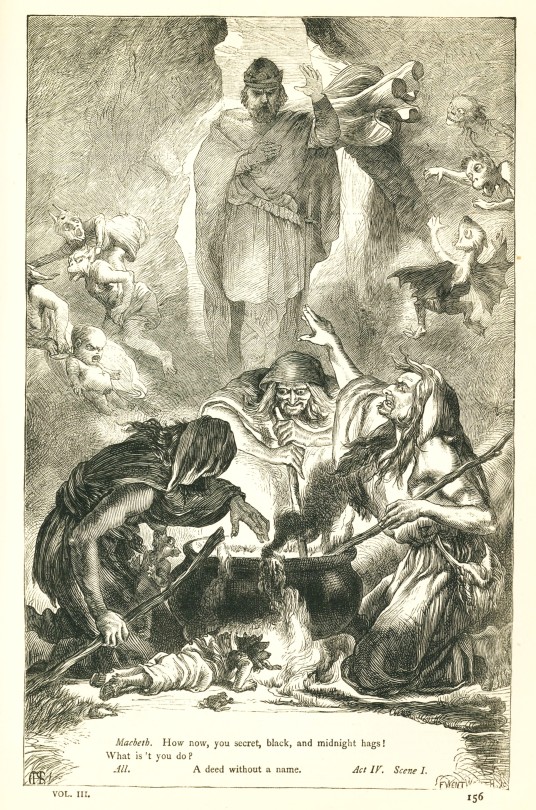
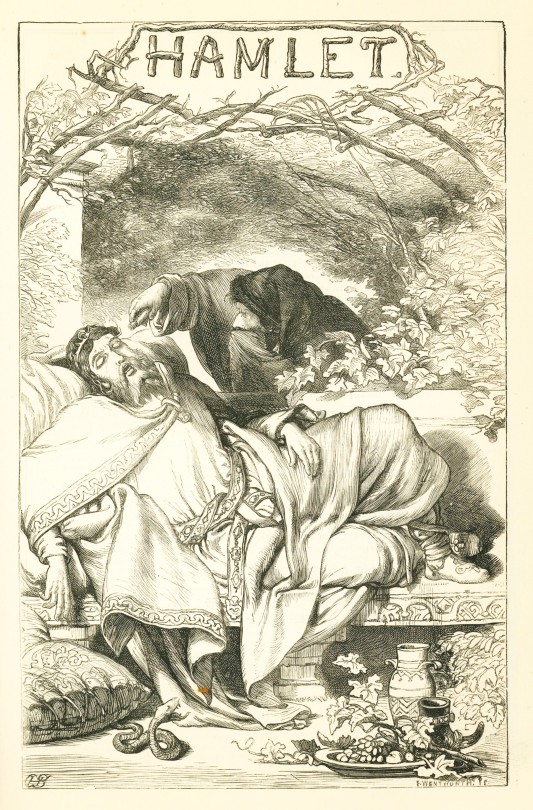


Volume Three of The Plays of Shakespeare published by Cassell, Petter, Galpin & Co. in the mid to late 1860s finishes off the set with a collection of Shakespeare’s tragedies and The Story of Shakespeare’s Life written by editors Charles (1787-1877) and Mary Cowden Clark (1809-1898). Similarly to Cowden Clark’s annotations, The Story of Shakespeare’s Life is written for an audience new to Shakespeare and is a thorough account of his life, heralding him as a “shining example to the whole human brotherhood”.
Englishman Henry Courtney (H.C.) Selous (1803-1890) illustrated all three volumes with his distinctive attention to minute detail and dense landscapes. Following his father’s portrait and miniature painting career, Selous attended the Royal Academy in 1818 where he exhibited his first work Portrait of a Favourite Cat. Twenty-two years later he would switch gears into historical painting and never look back. His illustrations for The Plays of Shakespeare add an emotive visual layer to the plays, benefiting young and novice readers who may not have experienced Shakespeare in a theatre.
The Plays of Shakespeare are a collected edition of the serialization of plays originally published in one of Cassell, Petter, & Galpin’s weekly papers over the course of many years. Met with great success, some seventeen editions have been published. Our early copy is half-bound in red leather with Shakespeare’s portrait embossed in gold on the cover.

View more Shakespeare Weekend posts.
-Jenna, Special Collections Graduate Intern
#shakespeare weekend#william shakespeare#shakespeare#the plays of shakespeare#charles cowden clark#mary cowden clark#h.c. selous#cassell petter galpin & co.#illustration#wood engravings
20 notes
·
View notes
Text
Shakespeare Weekend










The Plays of Shakespeare was published by Cassell, Petter, Galpin & Co., likely in the late 1860s or early 1870s and consists of three volumes each arranging the plays into comedies, histories, and tragedies with many illustrations as Cassell's Illustrated Shakespeare. Englishman John Cassell (1817-1865) was a tea and coffee merchant who pivoted into publishing in 1848 with the weekly newspaper The Standard of Freedom and expanded to the Illustrated Family Paper in 1853. When Cassell was unexpectedly called to pay back an advancement to his paper supplier, he turned to printing firm partners George Petter (1823-1888) and Thomas Galpin (1828-1910) for financial support. The three men went into a full partnership in 1859 and found great success in publishing illustrated editions of classic literature, including the popular Illustrated Family Bible.
It is from their illustration craze that The Plays of Shakespeare was born. Edited and annotated by Charles (1787-1877) and Mary Cowden Clark (1809-1898) and illustrated with wood engravings from drawings by H.C. Selous (1803-1890), the three-volume collection is brimming with detailed illustrations of the plays geared toward families and young readers. Volume Two contains Shakespeare’s historical plays.

View more Shakespeare Weekend posts.
-Jenna, Special Collections Graduate Intern
#shakespeare weekend#william shakespeare#shakespeare#the plays of shakespeare#cassell petter galpin & co.#john cassell#charles cowden clark#mary cowden clark#h.c. selous#Henry Courtney Selous#illustrations#wood engravings
22 notes
·
View notes
Photo










Birthday Anniversary Spotlight: Gustave Doré!
Well, his birthday anniversary was yesterday, but In celebration, we are showing the illustrations that appeared in Milton's Paradise Lost, edited with notes and a life of Milton by Robert Vaughan. This edition was published by Cassell, Petter, and Galpin in both London and New York in 1866 and includes 50 leaves of illustrations by Gustave Doré.
The 19th century French artist Gustave Doré, worked in many mediums but was known primarily for his wood engravings. He was a child prodigy, carving stone by age 12 and hired as a caricaturist by a French newspaper by age 15. He was a sought after illustrator and worked across many genres, from the works of Lord Byron, to the Bible, and even Edgar Allen Poe. He was extremely prolific, illustrating dozens upon dozens of works, many of them with over 100 illustrations each. He accomplished all this in a short span as he lived to be just 51 years old and passed away in 1883 while still working to complete the illustrations for an edition of Shakespeare’s plays.
We’ll post more works with illustrations by Gustave Doré in the future! In the meantime, you can learn about other editions of Paradise Lost here.
-Katie, Special Collections Graduate Intern
#Paradise Lost#John Milton#wood engravings#illustrated books#Gustave Doré#Cassell Petter Galpin & Co.#Katie
237 notes
·
View notes